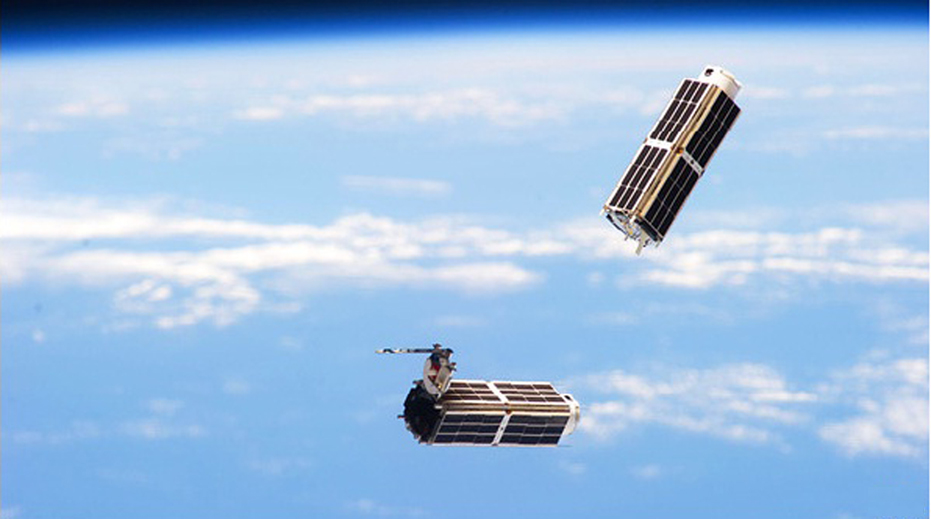From Rusana Philander in Cape Town, TZ Business News.
African countries have not yet announced sending anyone into space, but reports from Pretoria, South Africa, indicate the African race into outer space is gaining momentum and Tanzania is among four African nations leading the way.
The continent’s second Science Forum was hosted by South Africa In Pretoria on 8 December, 2016. It was announced at this forum South Afrca, in partnership with three other African countries, is working on launching its second nano satellite.
Currently, the continent has only one nano-satellite in space, which was launched three years ago. Officials also confirmed that the continent’s miniature satellite is still alive, adding that need existed for Africans to put more nano-statellites in space.
Nano satellites are tiny satelites that can look like anything from a match box to the size of a beer crate, but they are equiped with antenas, solar power collectors and cameras on board; and they have capacity to take pictures from space for use on earth.
Scientists say the positive side of these tiny high tech eyes in space is that they are cheeper to launch into space, although the downside is that the pictures they send back to earth are not in high resolution.
Humbulani Mudau, the Director of Space Science and Technology at the South African Department of Science and Technology said:”As an African country we want to develop our own space policy. We are currently engaged in bilateral talks with other countries. We also established the South African National Space Agency (SANSA) to understand our strengths. But we need more young people to be trained in this field. And we need to position our industries to be globally competitive,”
But South Africa is not operating alone in their space programme,accordng to Mudau, but as part of the African Space Programme, Andiswa Mlisa from the Group on Earth Observations identified countries already involved as Nigeria, Algeria and Tanzania whose current involvement related to the training of engineers and research collaborations.
African Heads of States adopted the African Space Policy and Strategy on 31 January 2016 in Addis Ababa. This formed part of the African Space Programme. It is also one of the flagship programmes of the AU Vision and Agenda 2063.
African governments see this industry holding the potential to become the next economy, officials said, adding that the continent has been investing a lot into space technology even though any space programme is capital intensive.
Naledi Pandor, the South African Minister for Science and Technology, said SANSA was currently working on a second satellite and that the African continent was very positive about implementing an African space programme.
“This is also why this science forum is so important because we want to ignite conversations around science and technology, as well as looking at the role science should play in our society and especially on the African continent,” the minister said. “We want to ensure that science and technology and innovation contributes fully to Africa’s growth and development.”
Nano Sats have potential use for various purposes. They could, for instance, be used to track environmental conditions, illegal tree-felling or changes in the course of rivers—which, even in their initial deployment, Planet Labs has discovered happen surprisingly often.
The frequency of satellite passes opens up many new possibilities, says Skybox’s Mr Berkenstock. His firm can offer a stream of analysis, such as the number of trees in a forest or the number of cars at various times of the day in parking lots across a nation.Transport patterns can be followed, infrastructure monitored, the planting of fields, plumes from smokestacks and ships in ports can all be observed. Overlaying more and more data will provide much richer visualisation, adds Mr Berkenstock.
Nor will all the nanosats be looking downwards. Sensors facing sideways and upwards from low-Earth orbit will allow researchers to carry out a large number of experiments and to take measurements that have previously been too costly to consider.
This includes detecting solar and cosmic radiation, interactions between magnetic fields and other forces which together make up what is called space weather. Measuring and predicting space weather could be used to protect billion-dollar satellites and prevent astronauts from receiving high doses of radiation. Many satellites measure aspects of space weather, but they tend to do so only in certain directions.
Although there is no standard price list for a launch, a CubeSat costs roughly $100,000 to put each 1.3kg unit into low-Earth orbit. A three-unit CubeSat might cost as much as $400,000. Jeff Foust, an analyst at Futron, a consultancy, studies launch costs and says he has heard of charges as low as $30,000 for a single CubeSat launched on a Russian rocket.
These prices put nanosats in the reach not just of small firms, but also of start-ups and researchers relying on academic grants. Some schools are also planning nanosat experiments. Bulk-buying launches for heavier combined payloads can work out, per kilo, even cheaper. And these costs could come down, too.
Elon Musk, SpaceX’s boss, has consistently predicted substantial price drops in launch costs, even to as little as $200 per kilo.





